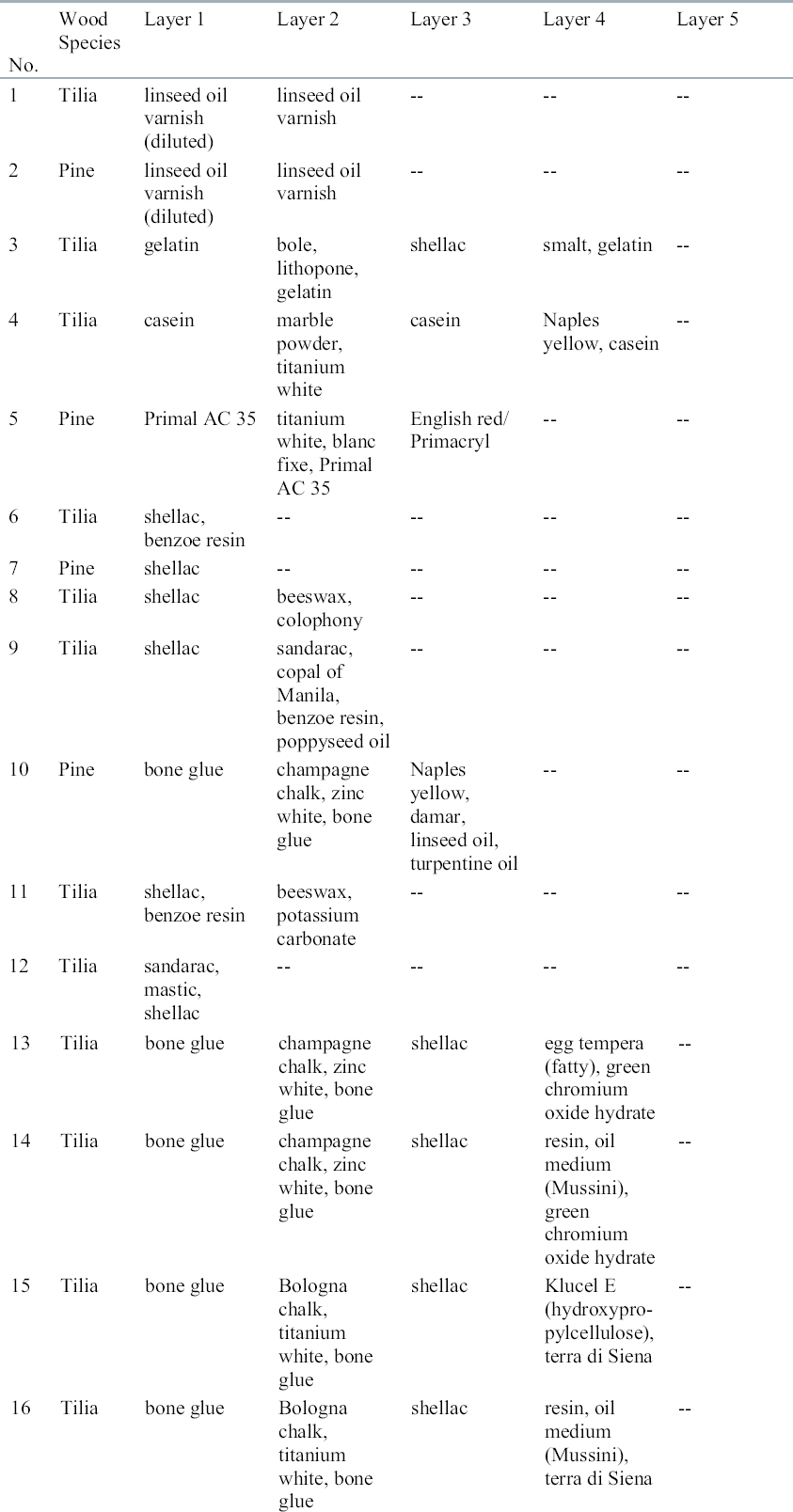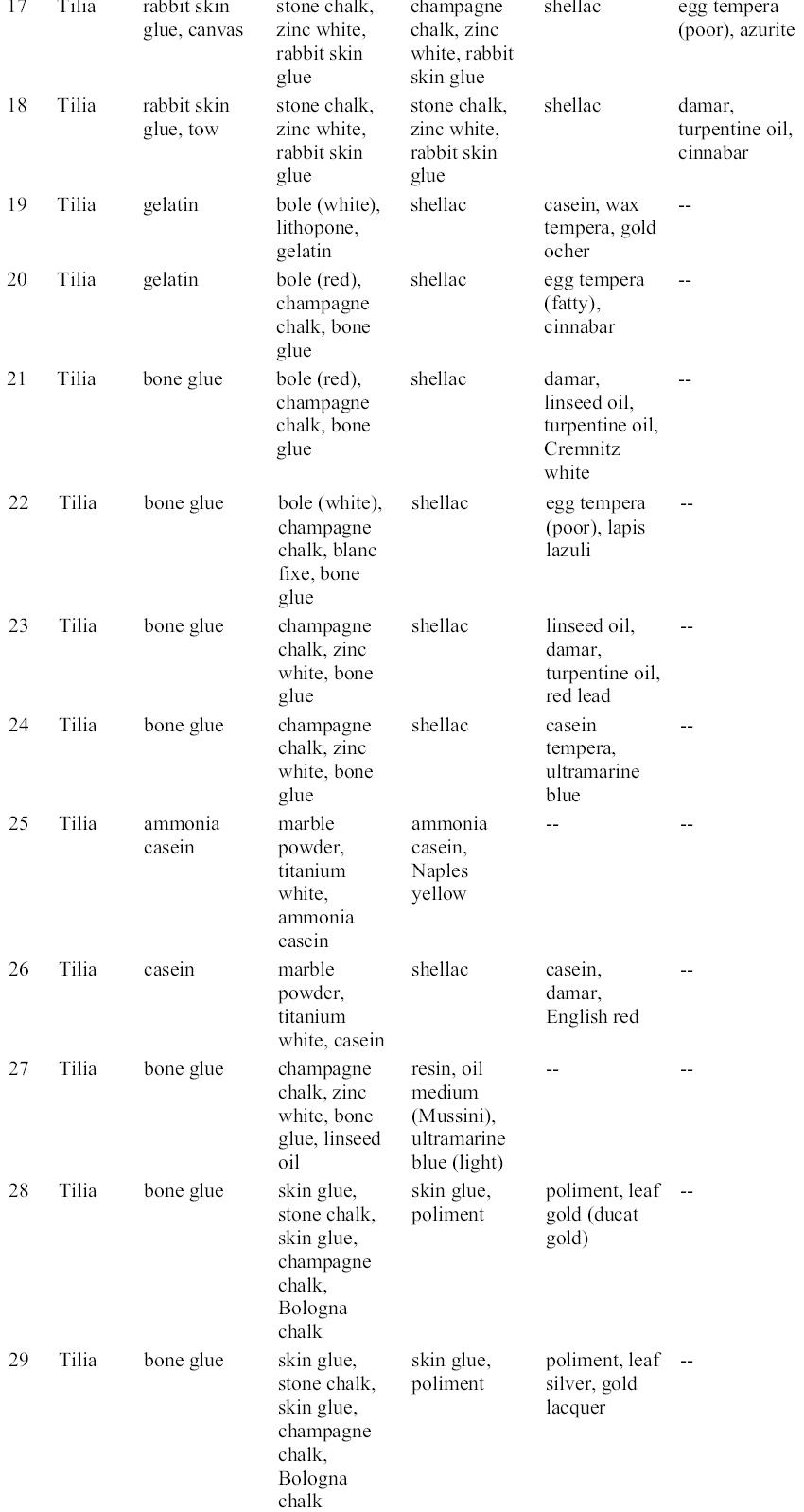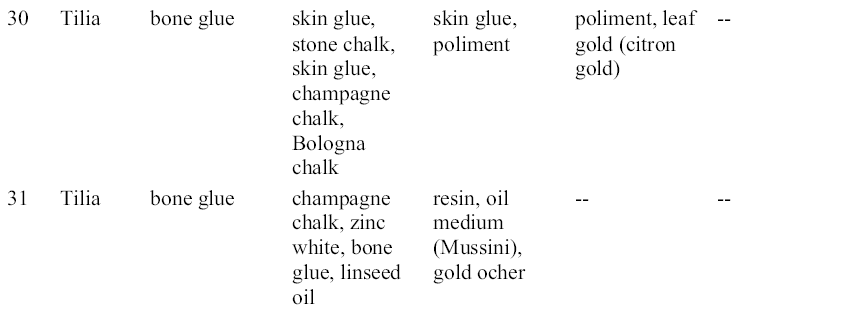THE EFFECT OF SUPERCRITICAL CARBON DIOXIDE EXTRACTION ON COLOR RETENTION AND PESTICIDE REDUCTION OF WOODEN ARTIFACTSSUNG MO KANG, ACHIM UNGER, & J.J. MORRELL
2 MATERIALS AND METHODSLimewood (Tilia sp.) or pine sapwood (Pinus sylvestris) samples (15 � 25 by 50 mm) were coated with 1 of 31 different coating combinations representing materials normally used to paint wood icons (table 1). The coatings included both organic and inorganic materials. These materials were treated using Hylotox 59 containing 3.5% technical DDT and 0.5% lindane. Technical DDT consisted of about 30% 2, 4- and about 70% 4, 4′-isomers. The solvent mixture of Hylotox 59 was a petroleum distillate designated as Laval 300 (~ 95%), isobornyl acetate (0.5%), and turpentine oil (0.25%). Laval 300 included aliphatic hydrocarbons, aromatic hydrocarbons
The potential for color change during processing was assessed by scanning specimens before and after treatment. Four specimens were used for each coating combination. The specimens were subjected to image analysis prior to treatment. Two wide faces of each sample were scanned using a digital scanner (600 dpi); then the entire scanned images were analyzed using Photoshop for luminosity and red, green, and blue color levels, which were measured on a scale of 0 to 255. The specimens were rescanned after treatment using the same scanner at the same settings, and the results were compared for each specimen. The samples were placed in an SCF extraction device consisting of a 90.8 mm inner diameter by 1036 mm long vessel preheated to 45�C (fig. 1). Carbon dioxide was admitted at a pressurization rate of 10 psi/second until pressure reached 3000 psi. The samples were maintained at 3000 psi under static conditions for 10 minutes. Then carbon dioxide was flowed through the vessel at 94.4 ml/minute for an additional 20 minutes. The vessel was then depressurized at 500 psi/minute. Following treatment, the two wide faces of each sample were scanned again and the results of the pre- and posttreatment scans were averaged for the four specimens per coating. These means were compared using t-tests at α = 0.01 or 0.05. The extracted samples were cut into two equal pieces. Then each sample was ground to pass a 20-mesh screen. The ground wood was thoroughly mixed, and 0.15 g of ground wood was mixed with 10 ml of methanol. The mixture was sonicated for three hours at 65�C. DDT concentrations in the extracts were determined by injecting one μl into a Shimadzu high-resolution gas chromatograph with a low-resolution mass spectrometer. Separation was achieved using a XTI-5 capillary column (Restek) (0.25 mm inside diameter � 30 m long) composed of fused silica with a 0.25 μ thick film of 95% dimethyl, 6 diphenyl polysilarylene. The carrier gas was Grade 5 helium at flow and split rates of 1.2 ml/minute and 5, respectively. Injector and detector temperatures were 250�C and 280�C, respectively. After holding for two minutes after injection, column temperature was increased from 35�C to 260�C at 25�C/minute. DDT levels were quantified by comparison with known standards. The residual DDT was calculated by subtracting the analyzed retention from the net initial retention. |


